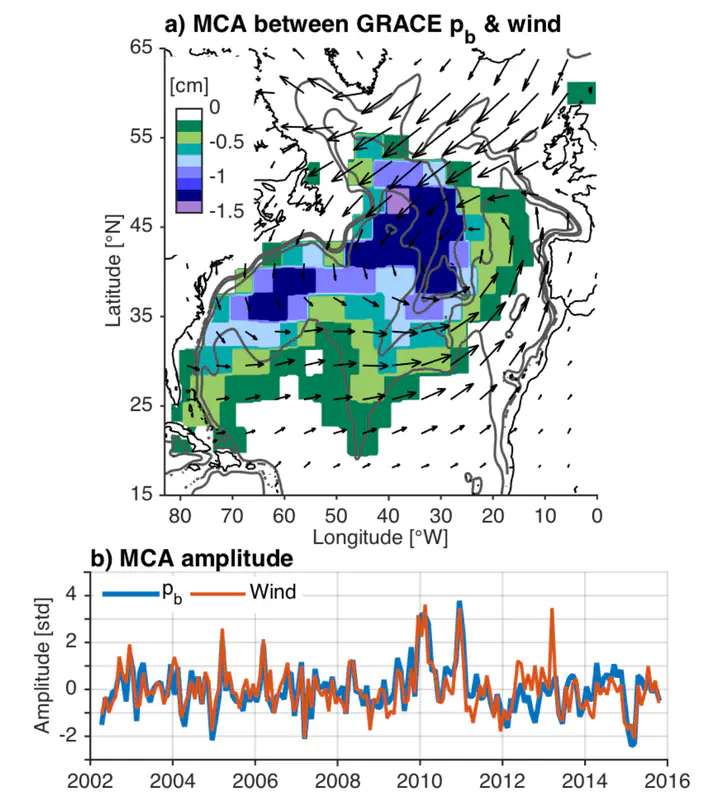 Maximum covariance analysis (MCA) showing the area ocean bottom pressure which is ‘activated’ by wind stress curl over the Atlantic.
Maximum covariance analysis (MCA) showing the area ocean bottom pressure which is ‘activated’ by wind stress curl over the Atlantic.Abstract
In situ observations of transbasin deep ocean transports at 26◦N show variability on monthly to decadal timescales (2004–2015). Satellite-based estimates of ocean bottom pressure from the Gravity Recovery and Climate Experiment (GRACE) satellites were previously used to estimate interannual variability of deep ocean transports at 26◦N. Here, we use GRACE ocean bottom pressure, reanalysis winds and in situ transport estimates at 26◦N to diagnose the large-scale response of the deep ocean circulation to wind-forcing. We find that deep ocean transports—including those associated with a reversal of the Atlantic meridional overturning circulation in 2009/10 and 2010/11—are part of a large-scale response to wind stress curl over the intergyre-gyre region. Wind-forcing dominates deep ocean circulation variability on monthly timescales, but interannual fluctuations in the residual in situ transports (after removing the wind-effect) are also captured by GRACE bottom pressure measurements. On decadal timescales, uncertainty in regional trends in GRACE ocean bottom pressure preclude investigation of decadal-timescale transport trends.